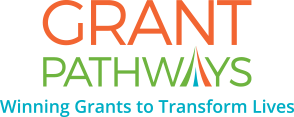Part II: Steps Toward a More Productive Year of Grant Seeking
This article is a continuation of a blog we posted two weeks ago on efficient productivity in grant seeking. Here is a recap of the first five steps: 1) Manage your Energy, Not Your Time, 2) Be Your Own Coach or Find A Trusted Coach, 3) Read About Productivity, 4) Set Goals.
Let’s continue with #5…
-
Create and Follow A Budget
Some of your SMART goals will inevitably be tied to money and you cannot measure them if you are not tracking your expenses and revenue. If budgets are intimidating for you, and you don’t have a finance department to take care of this process, start simply. Ironically, if you are a big nonprofit or a small one, the basic process is the same.
Small Nonprofits w/ few staff
- Enlist the help of a key board member
- Make a goal to identify one major budget category each day for a week
- Utilize a budget tool to help make the process easier (excel, Centage, Prophix, QuickBooks, Wave,)
- Start budget planning at least 1 month BEFORE you need a final budget
Medium to Large nonprofits with more staff and/or a finance department
- Involve key departments (or people) in the budget process
- Make time-bound goals for all departments to submit their budget needs
- Utilize one of the budget tools listed above
- Start budget meetings at least 2-3 months BEFORE you need a final budget. For example – if your fiscal year starts in January, you need to start planning in October or November, so you are ready to present your budget to your board for approval BEFORE January 1st arrives (don’t forget that many people take time off in Nov. and Dec., so start early to make up for this).
-
Find Tools That Work for You
There are so many tools in existence today to help you stay organized and have efficient productivity. If you are old school and like to write things down on paper, take time to shop for a notebook or planning calendar that has all the features you like. It may even be bound in your favorite color! Do whatever you need to do to make the process a little more fun. If you are tech-savvy or need a tool for all of your staff to use, schedule some time each week to look into tools that can create efficient productivity. There are tools for email, calendars, contact management, project management, etc.
-
Seek to Understand the Needs of Your Target Population
Do not assume you know what your target population needs. Even if you do think you know, you should engage in the work it takes to show funders how you know. Take the time to talk to the consumers of your services. Utilize surveys, focus groups, and public data to really understand what people need. This will lend credibility to your grant writing, but more importantly, it will also ensure that the services you are providing and how you provide them are relevant.
8.  Schedule Your Priorities Instead of Prioritizing Your Schedule (Steven Covey)
Schedule Your Priorities Instead of Prioritizing Your Schedule (Steven Covey)
This circles back to Step #1 and emphasizes why it is at the top of this list. If you are a leader of a nonprofit or busy professional, you must schedule things like exercise, meditation, and date nights. This may seem silly, but those of you who do this work get it. If it’s not on your schedule, it often gets pushed to the side. You have to intentionally schedule your priorities so the day-to-day tasks don’t take over.
And there we have it…now go forth and be efficiently productive. If you are searching for additional tools and services to help you with grant writing, head on over to our services page.
